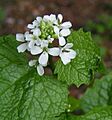Allelopathy facts for kids
Allelopathy is a cool way plants and other organisms communicate using special chemicals. It's like they send out secret messages that can help or hurt other living things around them. These chemicals can affect how other plants grow, how their seeds sprout, or even if they survive.
Contents
What is Allelopathy?
Allelopathy comes from two Greek words: "allelo," meaning "of each other," and "pathy," meaning "to suffer" or "to feel." So, it's about how organisms affect each other. In nature, many plants release chemicals into the soil or air. These chemicals can act like natural herbicides, stopping other plants from growing too close. They can also be helpful, like when some plants help good bacteria grow.
How Plants Use Allelopathy
Plants use allelopathy for different reasons. One main reason is to compete for resources. Imagine a plant wants all the sunlight, water, and nutrients for itself. By releasing chemicals that stop other plants from growing nearby, it gets more of what it needs. This is a clever survival strategy.
Chemical Warfare in the Garden
Some plants are famous for their allelopathic powers.
- Black Walnut trees are well-known for releasing a chemical called juglone. This chemical is toxic to many other plants, like tomatoes, apples, and blueberries. That's why you often see a clear space around a black walnut tree where other plants struggle to grow.
- Eucalyptus trees also release chemicals from their leaves. When these leaves fall to the ground, the chemicals can stop other plants from sprouting. This helps eucalyptus trees dominate their environment.
- Garlic Mustard is an invasive plant in many places. It releases chemicals that harm the fungi that many native plants need to grow well. This gives garlic mustard a big advantage.
Allelopathy in Agriculture
Farmers and gardeners can use the idea of allelopathy to help their crops.
- Natural Weed Control: Instead of using man-made chemicals, some farmers plant "cover crops" that release allelopathic chemicals. These chemicals can stop weeds from growing, which is a natural way to keep fields clean.
- Crop Rotation: Knowing which plants affect others can help farmers plan what to plant next. They can avoid planting crops that are sensitive to the chemicals left behind by the previous crop.
- Companion Planting: Some plants grow better together because they help each other. This can sometimes involve allelopathy, where one plant releases chemicals that benefit its neighbor, like attracting helpful insects or fighting off pests.
How Allelochemicals Work
The chemicals involved in allelopathy are called allelochemicals. They are a diverse group, meaning there are many different kinds.
- Some allelochemicals stop seeds from sprouting.
- Others prevent roots from growing properly.
- Some can even mess with a plant's ability to take in nutrients or perform photosynthesis (how plants make their food).
These chemicals can be found in different parts of the plant, like roots, leaves, stems, or even flowers. They can be released into the environment through rain washing them off leaves, or through the roots directly into the soil.
Impact on Ecosystems
Allelopathy plays a big role in shaping natural environments. It helps decide which plants grow where and how different plant communities develop.
- Dominance: Strong allelopathic plants can become dominant in an area, reducing the variety of other plants.
- Invasive Species: Many invasive plants use allelopathy to outcompete native plants, making it harder for local species to survive. This can change entire ecosystems.
- Forest Health: In forests, allelopathy can affect how new trees grow and how different species interact.
Images for kids
-
(Australian) coastal she oak litter completely suppresses germination of understory plants as shown here despite the relative openness of the canopy and ample rainfall (>120 cm/yr) at the location.
See also
 In Spanish: Alelopatía para niños
In Spanish: Alelopatía para niños



